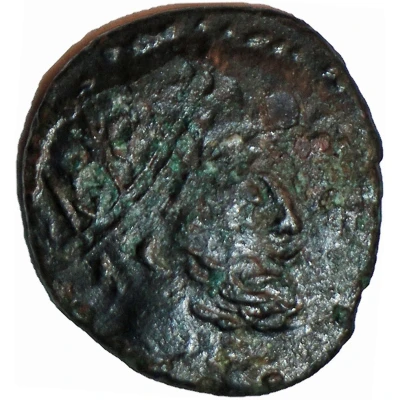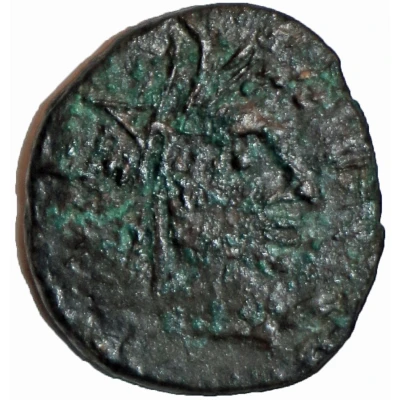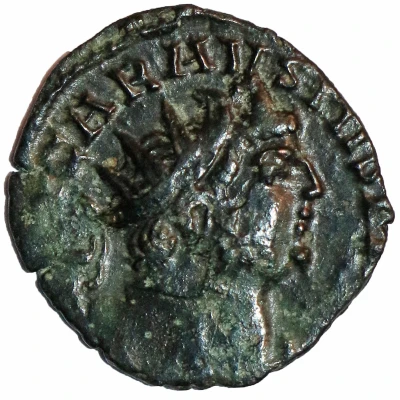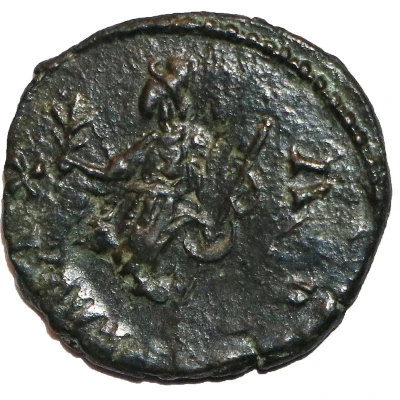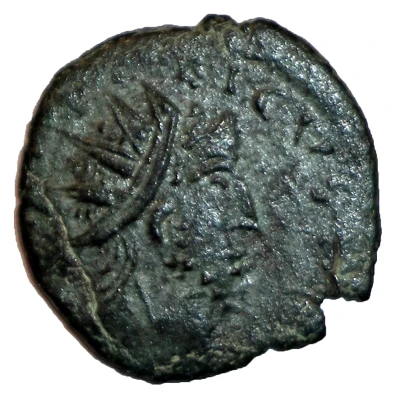
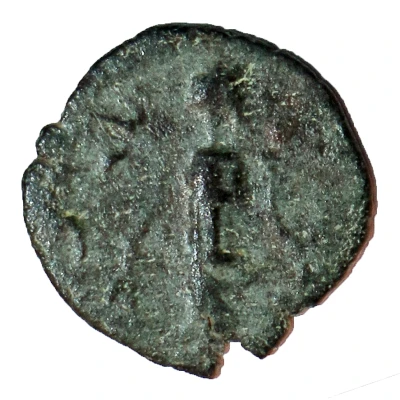

Radiate - Tetricus I SALVS AVGG; Barbarous imitation
| Bronze | 0.86 g | 13 mm |
| Issuer | Uncertain barbarous city (Rome) |
|---|---|
| Type | Standard circulation coin |
| Years | 274-280 |
| Value | Radiate (1) |
| Composition | Bronze |
| Weight | 0.86 g |
| Diameter | 13 mm |
| Shape | Round (irregular) |
| Technique | Hammered |
| Demonetized | Yes |
| Updated | 2024-10-04 |
| Numista | N#275447 |
|---|---|
| Rarity index | 90% |
Reverse
Salus standing facing, head to left
Script: Latin
Lettering: SAL(VS AVGG)
Translation: Salus Augusti (to the health of the Emperors)
Comment
Romano-British imitation of Tetricus I radiate, imitating Colonia Agrippinensis (Cologne), after 274AD.
Found in Britain. British barbarous radiates were apparently produced between the reign of Victorinus (268AD) and soon after c274AD, when the Gallic Empire was reincorporated into the Roman Empire and Aurelian banned barbarous issues.
Catalogue reference: 127 / 11247
Interesting fact
One interesting fact about this coin is that it is a barbarous imitation of a Roman coin, meaning it was created by a non-Roman culture or group, possibly as a form of currency or as a way to imitate the powerful Roman Empire. This coin, specifically the Radiate type, was issued during the reign of Tetricus I, who was a Roman Emperor from 274 to 280 AD. Despite being a copy, it still features the same imagery and symbols as the original Roman coins, such as the radiate crown on the obverse (front side) and the legend "SALVS AVGG" (Salus Augusti) on the reverse (back side), indicating the coin's connection to the Roman Empire.
